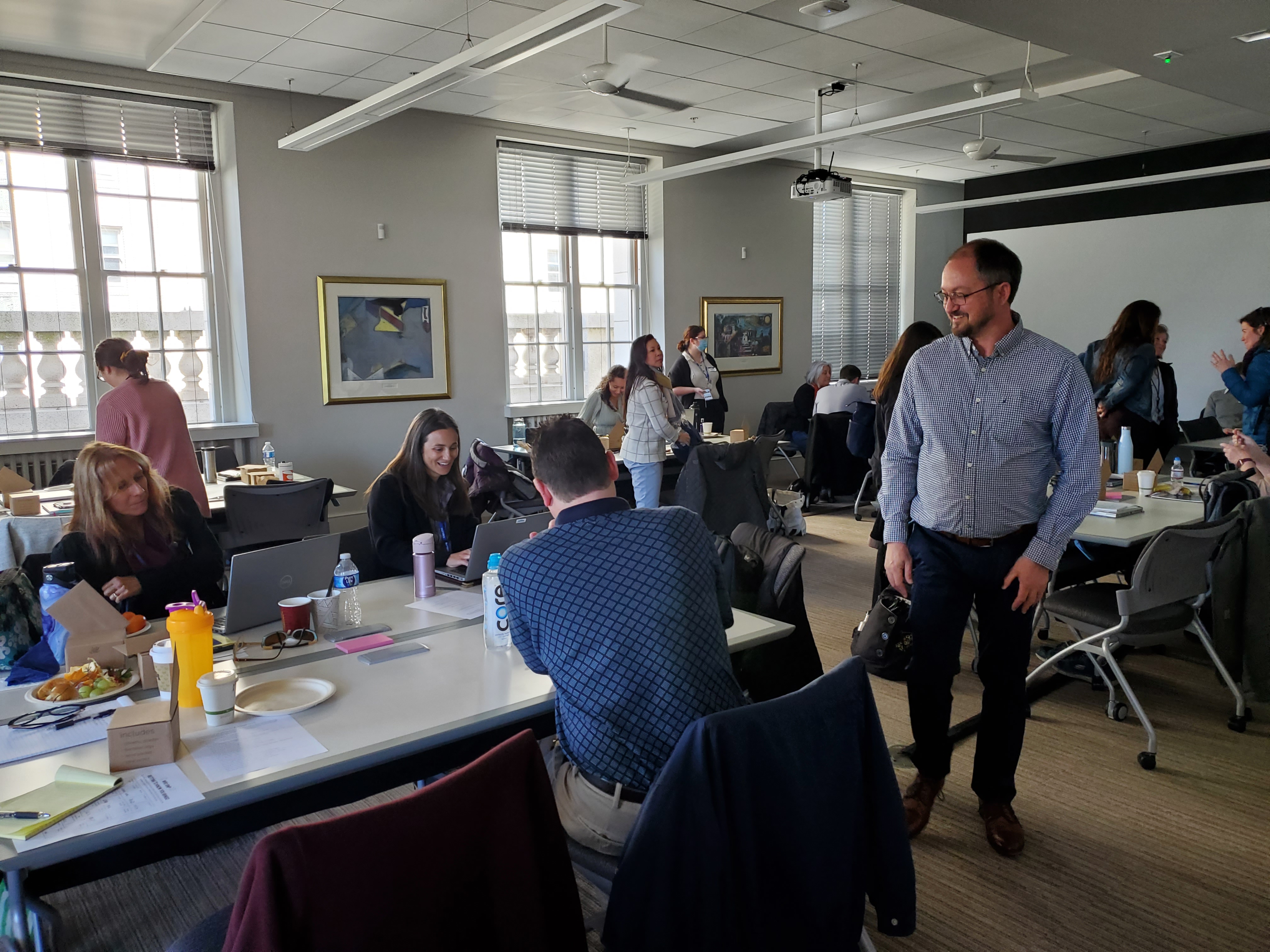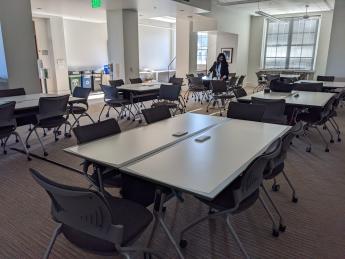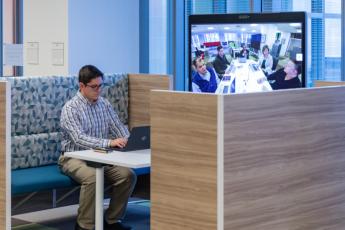
Federal coworking in San Francisco saves taxpayers hundreds of thousands of dollars
A chance encounter in San Francisco at a meeting in January led to a new GSA federal coworking arrangement that quickly solved two problems and saved taxpayers hundreds of thousands along the way.
The National Park Service (NPS) and the Department of Agriculture (USDA) were facing challenges at their office buildings in San Francisco: NPS was relocating, and the federal building where USDA worked had been rocked in New Year’s storms that left floodwaters and power outages in its wake.
For NPS, some employees were working from home because of the pandemic but they realized they still needed to collaborate in person – and needed designated space to do so.
After a presentation on the federal coworking space at 50 United Nations Plaza Federal Office Building (50 UNP), NPS management analyst Vanessa Ehrenpreis decided to give coworking a whirl. Not only did she like it, but she said it was good for productivity.
“The space allowed me to meet people from different divisions of our organization who I otherwise wouldn’t interact with in my day-to-day,” she said. “The space has built new connections in our workforce and removed silos in our operations.”
GSA teams including its Public Buildings Service have initiated federal coworking to provide shared spaces for federal workers to meet, create, and collaborate. It offers federal agencies a new way to work together and to accommodate short-term solutions exactly like this one. San Francisco was identified as a prime location to test the concept and gather feedback to inform the program’s development.
John O’Duinn, a senior adviser in GSA’s human resources management office, brought his understanding of distributed teams to support 50 UNP’s new federal coworking space. He said he’s not surprised by Ehrenpreis’ experience.
“Having these different teams from different agencies interact in the same space has fostered a sense of community,” O’Duinn said, referring to daily interviews with coworking participants. He said that has led to increased morale and reduced burnout.
NPS employees quickly told their federal colleagues and friends at USDA, who soon started using the space, too, when storms disrupted their office space.
Taxpayer savings
GSA’s federal coworking spaces couldn’t have come at a better time for NPS, who was leasing office space in a commercial, mixed-use skyscraper for more than $2.5 million per year. NPS’s lease would expire in early August, but the park service wouldn’t be able to move into their new offices on Battery Street until November.
Extending their lease through that gap would have cost at least $200,000 per month, explained O’Duinn, who gave the presentation that sparked NPS’s Ehrenpreis to investigate federal coworking. Providing alternative work space allowed NPS in person office space and significant savings over that costly lease extension.
“By using the coworking space, GSA and NPS avoided a costly lease extension as the first benefit,” explained Dan Brown, Public Buildings Service Regional Commissioner for GSA’s Pacific Rim Region. “Combining that with reducing the federal footprint and converting from leased to owned space adds up to more cost avoidance for the federal government.”
The coworking space provided a bridge from an expiring lease of 35,000 square feet to a significantly reduced federally owned location of just over 5,100 square feet.

Since 50 UNP’s federal coworking space is a pilot program as part of GSA’s Workplace 2030 effort, the NPS employees working there are providing GSA with real-user feedback.
Some of the NPS employees have become coworking ambassadors, describing their positive experience to colleagues as well as friends at other agencies. This is helping GSA’s Public Buildings Service attract more early adopters of shared space and gain even more valuable insights from those who use it.
“We want to learn where we are hitting the mark and where there is still room for improvement and refinement as we expand this concept,” said GSA Chief Architect Chuck Hardy.
GSA’s other coworking programs

Coworking space is not a new concept. Coders and tech innovators have embraced the idea of working separately-together since the late 1990s. A freelancer in San Francisco seeking an office-like environment to socialize and exchange ideas started the U.S.’s first coworking space.
Despite its ’90s roots, it’s a relatively new working environment for federal employees. As part of this Workplace 2030 initiative, GSA is spearheading how and where public servants work. The agency now has seven federal coworking spaces across the country, including 50 UNP.
Other GSA coworking pilots include the Workplace Innovation Lab at GSA headquarters in Washington where federal agencies can try different areas of office innovations, which include an array of tech and furniture.
The National Park Service isn’t the only federal agency to find GSA money-saving coworking solutions useful. In addition to the federal coworking pilot program, GSA offers federal agencies commercial coworking programs. The U.S. Geological Survey in Portland, Oregon used a GSA commercial coworking solution when they needed workspace on short notice.
“We are providing flexibility in a time of great change. When agencies experience emergencies, hiring surges, or construction delays, our federal coworking and commercial coworking offerings provide the turnkey space they need,” said Hardy.
To learn more about GSA’s Future of Work, be sure to listen to the GSA Does That!? podcast Aug. 8.

 U.S. General Services Administration
U.S. General Services Administration
